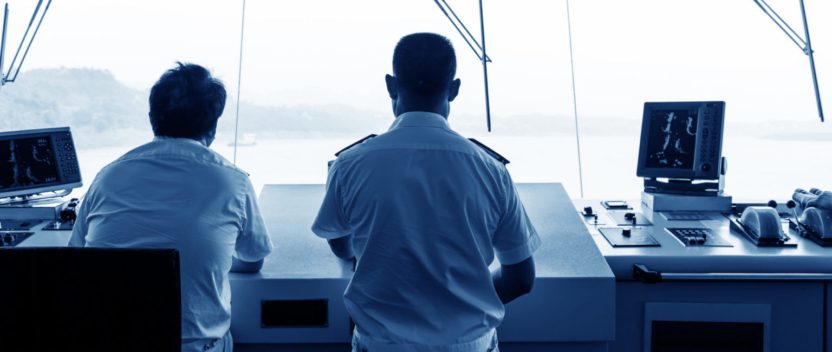Uber, not Kodak, should be the model for shipping
We have examined the impact – real and potential – of disruptive technology on shipping in some recent articles, but how does the industry assess the challenge? The view of outsiders tends to be that this isn’t something you see coming until it has happened. But a panel at the recent DigitalShip CIO Forum in Rotterdam heard that owners are increasingly thinking about the future and preparing for it.
Peter Van de Venne, IT director of multi-purpose operator Spliethoff identified three dimensions of disruption. The first, he said is that which directly affects the industry – and might be seen too late to react. “The second is disruptive to our suppliers’ business [and therefore potentially positive] and the third is disruption that we can use to change the business.”
Former CIO at Van Oord Ton Arrachart agreed that the focus on the negative impact can constrict companies from seeing the potential for change. There is a tendency not to see it for what it is – innovation. “I don’t see it as disruption, it’s just empowerment. This can be empowerment of organisations to embrace new technology and convert it into new business models or other opportunities that can sustain the business.” He pointed out that shipping’s apparent resistance to more intervention from the shore goes against the trend in other industries. This might be a result of the way technology is promoted but in other sectors, remote assistance is a matter of evolution. “Darwin said it’s not the most intelligent creatures that survive, but the ones who can adapt best to change,” he added.
As Van De Venne pointed out, that might happen faster if the price of connectivity falls and disruption hits the service providers first. But SpeedCast’s Martin Reason said, the market is already in the throes of disruption, though not in the way many imagine. The operators and owners present – and there were plenty – must be wondering where they go next based on the wealth of options available. “There is hype and spike and then it comes down and you get the reality. The new technologies such as HTS and others are still in the hype cycle. When it comes to fruition we will find out what works and what doesn’t,” he said.
Maritime Business Development Director at the Transport Systems Catapult Chris Moody pointed out that confusion or not, change was coming and it would happen regardless of whether shipping was prepared. There was no reason to think maritime will be immune to the drivers affecting land transport or the automotive industry – though it might struggle to be included in the process. Try to imagine, he said, if Walmart or Amazon decided to build smaller, agile automated ships that could autonomously exchange freight and move it through optimised terminals. “The disruption will be driven by people who are not in this room and companies not represented here. Those models don’t exist yet but someone is going to come up with more efficient ways to get from A to B from a user’s point of view. The big companies may or may not be able to adapt to that but then maybe the big shipowners of today are the Kodaks of tomorrow.”
Trying to avoid extinction – or even some serious re-ordering – would mean thinking a lot more about connecting producers and retailers with more integrated logistics. And he questioned whether as connectivity improved, the model of the large, centralised mega-port would be sustained. From the supplier point of view, Reason said his focus was always to try and understand the customer needs, their business plan and strategy but getting that visibility could be a challenge. For the owner’s part, Van de Venne thinks we have yet to recognise the change taking place. “The attention is shifting away from infrastructure to the applications. We were seeing 80% of data from the crew side and only 20% from the business. As we get smarter, the business component is growing fast.” Arrachart agreed that things were changing. When his company implemented next-generation communications they quickly found that as more and more devices appeared and channels opened, communication with clients, vendors and peers increased in a natural process. “The Van Oord strategy is moving being a subcontractor to a main contractor. It’s a new game with more risk that you have to address by utilising technology, not by denying it and focusing on the negative,” he said.
Even so, he said his experience was that too many CFOs still see IT as a cost rather than a value, something which can delay deploying new technology and limit the capabilities of the business. The Spliethoff strategy includes a group that meets regularly to address short and long term issues and move them closer to C-suite level, but what about the power of thinking outside the box? Moody acknowledged that Silicon Valley start-ups encourage their employees to think about non-core tasks but this is just one part of their 12-hour day. “Everyone has the experience of being too close to the business to see what’s going on.” The real problem might be that we don’t imagine scenarios in the same way as those who would disrupt the industry. What if costs could be cut by 50% – what if there were no constraints on bandwidth? Van de Venne agreed innovation doesn’t exist in a vacuum but comes with a business case attached – in his case to be thinking five years ahead and adopting an ‘API first’ approach in its interface to the outside world.
Ultimately, disruption brings transparency so what might we expect if more ships had some kind of reliable connection, regardless of how they used it. To Chris Moody that would be an opportunity to properly model the market and analyse its inefficiencies. “Then you might figure out how to co-operate or change the way you are operating to improve efficiency. The drivers have to be economic but an IKEA or Wal-Mart has very little control over the shipping part of its supply chain and that’s a target.” The cost of such a leap – be it in dollars or imagination – will be the sticking point for many owners but Arrachart reasoned that the value of keeping a 50-vessel fleet operating would always be greater than the cost of a bigger spend on comms.
If providers could properly define their base cost and make a case for added value on top, perhaps owners would pay more, but he had a different idea. “The start-ups that are disrupting finance now encourage the user to put a value on the service. Perhaps Speedcast would allow us to have data communications for free and usage of system is the asset, which would make them more like a broker.” That might be a leap to far but as Arrachart observed “Ultimately you have to put yourself in a place to deal with the threat, whether you regard it as disruptive or innovative is up to you.”


